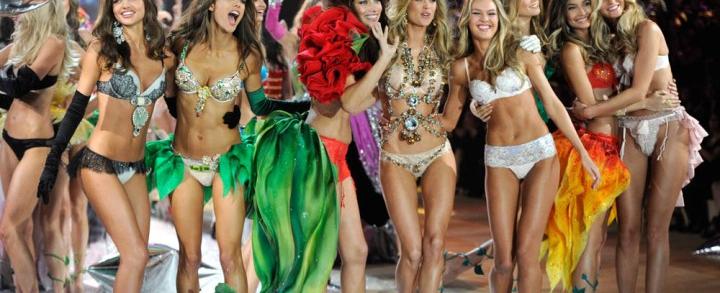

In the world of fashion and glamour, few events have ever achieved the dazzling allure and global appeal of the Victoria’s Secret Fashion Show. For over two decades, this annual extravaganza transformed the runway into a glittering spectacle of art, music, and fantasy. From the iconic “Angel” wings to the star-studded performances, each show promised a mesmerizing blend of fashion and entertainment. It wasn’t just a display of stunning lingerie; it was a cultural phenomenon that shaped the careers of supermodels and redefined the boundaries of fashion shows. Dive with us into the sequined history of this legendary event, reliving its iconic moments, its highs and lows, and the legacy it leaves behind.
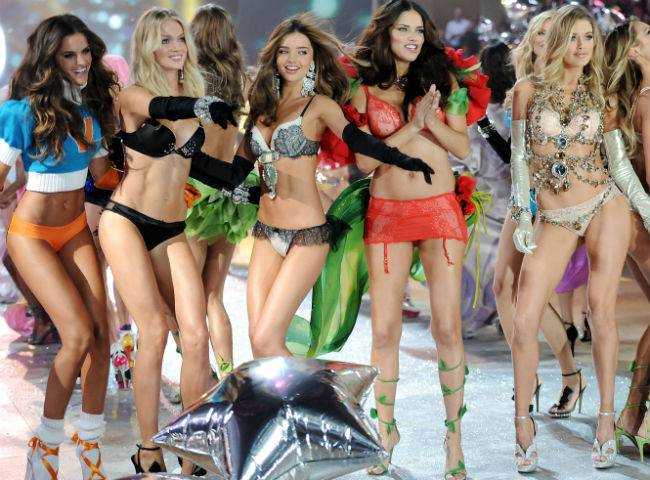
I. Opening the Wardrobe: An In-Depth Exploration of the Victoria’s Secret Fashion Show
Welcome, fashion enthusiasts, trendsetters, and everyone bewitched by the allure of high fashion. Unravel the captivating tale of the Victoria’s Secret Fashion Show, a spectacle that transcended the boundaries of mere fashion shows to become a globally celebrated event. Embark on a mesmerizing journey that takes you behind the velvet ropes, where you’ll discover the genesis, evolution, triumphs, and controversies of a show that, for over two decades, redefined the very essence of glamour and style.
The Victoria’s Secret Fashion Show was a dazzling amalgamation of fashion, music, entertainment, and artistry. Conceived in 1995, this brainchild transformed from a relatively modest presentation into a scintillating global phenomenon, fusing together the worlds of fashion, entertainment, and pop culture. Its success lay not just in showcasing lingerie but in elevating it into a symbol of luxury, aspiration, and self-expression.
Imagine a stage where Hollywood meets haute couture, where supermodels are transformed into ethereal Angels, where music icons serenade audiences, and where fashion is more than attire—it’s a vivid, enthralling performance. That was the magic of the Victoria’s Secret Fashion Show.
The inception of this iconic show can be traced back to August 1995 at New York City’s plush Plaza Hotel. In stark contrast to its future grandeur, the first show was a low-key affair. There was no live telecast, no glittering array of superstars, and no globally recognized supermodels on the runway. The audience was comprised of industry insiders and journalists. It was a private affair, a mere glimmer of the brilliance it would eventually radiate.
The idea was revolutionary in its simplicity—take lingerie, an essential but often overlooked part of a woman’s wardrobe, and transform it into mainstream fashion. Bring it out of the shadows and into the spotlight. Create a platform that would not only display lingerie but celebrate it, turning it into a fashionable statement that women around the world could connect with and aspire to.
What set the Victoria’s Secret Fashion Show apart was its ability to create a vivid and emotionally engaging narrative around lingerie. It wasn’t merely about garments; it was about a lifestyle, an aura of confidence, allure, and empowerment. The show was a kaleidoscope of themes, from sultry romantic to whimsical fantasy, each telling a story that resonated with different facets of femininity.
But it didn’t stop there. The show evolved, embracing innovation and creativity. It became a trendsetter in many ways, presenting lingerie through theatrical themes, showcasing designs that were both artistic and avant-garde. This was where lingerie met high fashion. Models were adorned with wings, turning them into Angels, a concept that would become synonymous with the brand and symbolize the epitome of glamour.
A significant factor in the success of the show was its ability to blend music and fashion seamlessly. Live performances by top artists created an electrifying ambiance that resonated with audiences both in attendance and watching at home. The show was an immersive experience, a feast for the senses that transcended the traditional boundaries of a fashion show.
As years rolled on, the Victoria’s Secret Fashion Show became a much-awaited annual event, with millions of viewers tuning in globally. It became more than a show; it was a celebration of fashion, beauty, music, and empowerment.
But every bright star has its shadows. Along with its dazzling success, the show faced its share of controversies, especially regarding its portrayal of body image and diversity. These challenges were part of the complex tapestry that formed this fascinating saga.
As we stand at the threshold of this journey, know that the story of the Victoria’s Secret Fashion Show is rich, multifaceted, and layered. It’s a tale that encapsulates the highs and lows, the glitter and the grit, the trends and the traditions of a show that made history.
So come along, dear reader, as we unfold the pages of this fashion chronicle and step into a world that continues to inspire, intrigue, and immortalize the very essence of style and glamour. The curtain has risen, and the show is about to begin!
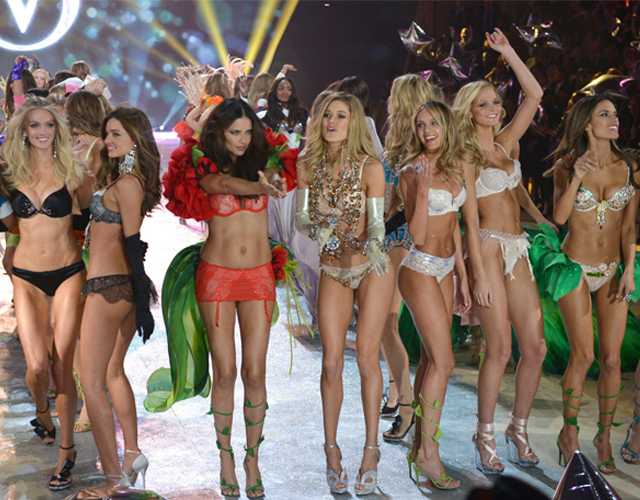
II. The Show Takes Flight: The Evolution and Internationalization of the Victoria’s Secret Fashion Show
As we continue our fascinating journey through the captivating world of the Victoria’s Secret Fashion Show, we now arrive at a chapter filled with transformation, ambition, and soaring creativity. From its humble beginning as an industry event, the Victoria’s Secret Fashion Show blossomed into an international spectacle, captivating millions of viewers worldwide. Buckle up, as we explore the growth, expansion, and global appeal of a show that became synonymous with glamour and allure.
The early days of the Victoria’s Secret Fashion Show were marked by intimacy and modesty. Hosted at New York City’s Plaza Hotel in 1995, the show initially served as an industry gathering, targeted at showcasing the brand’s latest offerings to fashion insiders. While glamorous, it was a far cry from the star-studded extravaganza it would become.
But a vision was set in motion, and the wheels of transformation were turning. The subsequent years saw a relentless pursuit of innovation, creativity, and global appeal. The show’s producers envisioned a stage that would transcend traditional fashion boundaries and connect with audiences on an emotional and aspirational level.
The metamorphosis began in 1999 when the Victoria’s Secret Fashion Show was broadcasted on the internet for the first time, attracting over 1.5 million viewers. This was a game-changer, opening the doors to a global audience and positioning the brand at the forefront of digital innovation.
In 2001, another milestone was reached as the show made its television debut. This move catapulted Victoria’s Secret into mainstream pop culture, allowing it to reach households across America and beyond. The synergy of fashion, music, and entertainment created a viewing experience unlike any other, turning the show into an annual tradition for many.
But the ambition didn’t stop there. The Victoria’s Secret Fashion Show had set its sights on the world stage. In 2000, the show left the shores of the United States for the first time, gracing the glamorous city of Cannes, France. The international stage added a new dimension to the show’s appeal, allowing it to tap into diverse cultures, trends, and audiences.
Subsequent years saw the show traveling to some of the world’s most iconic cities, including London and Shanghai. Each new location brought unique flavor, style, and inspiration, further enriching the show’s tapestry. The global journey not only broadened the brand’s appeal but also showcased its ability to adapt, innovate, and resonate with different cultures.
The expansion was not just geographical. The show grew in scale, grandeur, and influence. From featuring the biggest names in the modeling industry to attracting A-list celebrities, the Victoria’s Secret Fashion Show turned into a red-carpet event. The runway transformed into a platform where fashion, music, and entertainment converged to create a mesmerizing spectacle.
As the show evolved, so did its ability to influence and shape trends. It became a beacon of fashion inspiration, setting the tone for lingerie design, styling, and presentation. Its ability to push boundaries and challenge norms allowed it to stay relevant and fresh, continually captivating audiences with its creativity and flair.
However, the road to global success was not without its bumps. The show faced criticisms and controversies, particularly around issues of diversity, inclusivity, and portrayal of body image. These challenges were part of the complex narrative that shaped the Victoria’s Secret Fashion Show’s growth and evolution.
The journey from the Plaza Hotel to the world stage is a testament to the vision, determination, and creativity that fueled the Victoria’s Secret Fashion Show. It’s a tale of a brand that dared to dream big, to challenge the status quo, and to create a show that transcended fashion to become a cultural phenomenon.
So, as we glide down this glittering runway, we celebrate the audacity and brilliance that propelled the Victoria’s Secret Fashion Show into the annals of fashion history. The wings were unfurled, the stage was set, and the world watched in awe as the show took flight, leaving an indelible mark on the global fashion landscape.
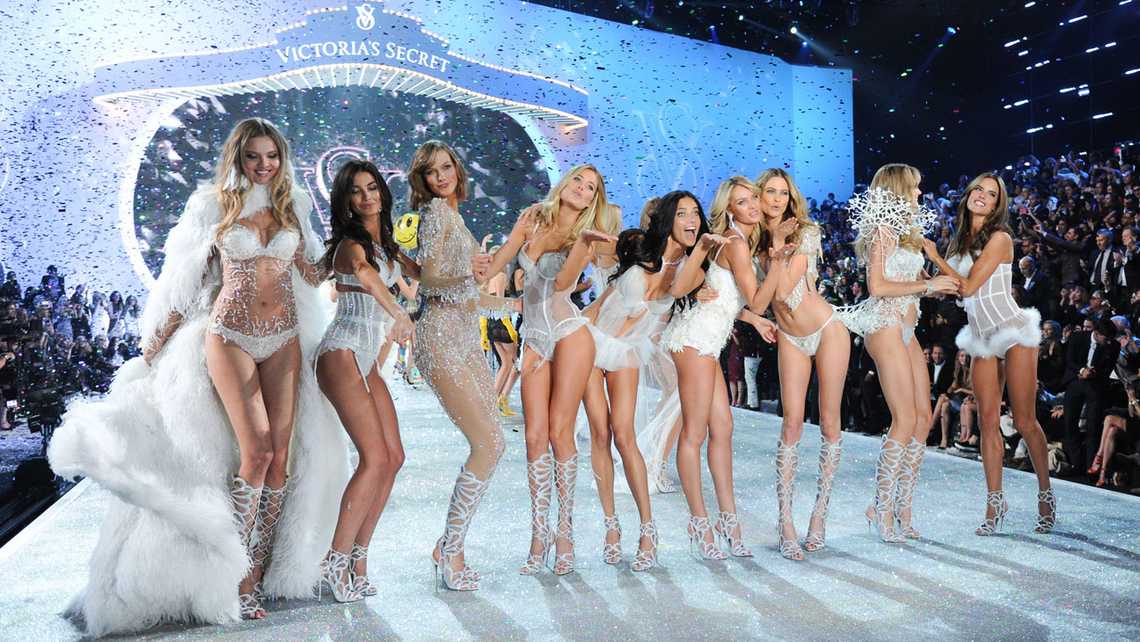
III. Walking Among the Angels: The Supermodels Who Defined the Victoria’s Secret Fashion Show
As we delve deeper into the fascinating world of the Victoria’s Secret Fashion Show, we find ourselves at the heart of its magnetic appeal—the supermodels. These women weren’t just mannequins parading down the runway; they were the embodiment of an ideal, the personification of allure, glamour, and grace. The Victoria’s Secret stage became a place where models transcended their roles to become Icons, Legends, and Angels.
The beginning of this story is unassuming. The first shows featured beautiful women, certainly, but they were mostly industry models, names that might not have been recognized outside the fashion world. But as the show’s popularity grew, so did the prominence of its stars.
In the late ’90s and early 2000s, the show began to feature names that resonated beyond the fashion industry. Supermodels like Gisele Bündchen, Tyra Banks, and Heidi Klum brought an added dimension of celebrity to the runway, turning the show into a must-see event.
The concept of the “Victoria’s Secret Angel” was introduced in 1997, and it quickly became a coveted title. To be an Angel was to reach the pinnacle of the modeling world. The Angel wings became a symbol of prestige, allure, and excellence. Models like Adriana Lima, Alessandra Ambrosio, and Candice Swanepoel donned these wings, becoming the faces of the brand and global fashion icons.
Becoming an Angel was more than just a contract; it was a coronation. The women who earned their wings became part of an elite sorority that represented beauty, grace, and strength. They were role models, celebrated not just for their looks but also for their personalities, philanthropy, and entrepreneurial ventures.
The selection process for these Angels was intense and rigorous. A spot on the Victoria’s Secret runway was one of the most sought-after gigs in the modeling industry, and earning the Angel wings was even more prestigious. Models had to demonstrate more than just physical beauty; they had to exude charisma, confidence, and a certain je ne sais quoi that set them apart.
As the years rolled on, the roster of Angels and supermodels continued to evolve. Fresh faces joined the ranks, reflecting the brand’s commitment to diversity, global appeal, and contemporary ideals of beauty. Models like Liu Wen, the first East Asian model to walk the show, and Maria Borges, who made headlines by embracing her natural hair, brought a richness of representation that broadened the show’s appeal.
The Victoria’s Secret Fashion Show also became a launching pad for aspiring models. A debut on this coveted runway often signaled a promising career, opening doors to opportunities in fashion, film, and television.
However, the portrayal of beauty and body image on the Victoria’s Secret runway was not without controversy. Criticism arose regarding the lack of diversity in size and the promotion of unrealistic body standards. This dichotomy added a layer of complexity to the show’s legacy and its relationship with contemporary society.
In reflecting on the impact and legacy of the Victoria’s Secret supermodels, one cannot overlook the multifaceted role they played. They were more than just beautiful faces; they were ambassadors of a brand, icons of an era, and trailblazers in the fashion industry.
So here’s to the women who graced the Victoria’s Secret runway, who inspired with their grace, dazzled with their beauty, and captivated hearts around the world. They were more than models; they were muses, luminaries who illuminated the path for those who followed. In the glamorous world of the Victoria’s Secret Fashion Show, they were not just walking the runway; they were walking among the stars, forever etched in the annals of fashion history.

IV. A Symphony of Style and Sound: The Music and Performances that Electrified the Victoria’s Secret Fashion Show
In our enthralling exploration of the Victoria’s Secret Fashion Show, we now arrive at a dimension that infused the show with life, rhythm, and soul: the music and performances. The fusion of fashion and music was not a new concept, but the way Victoria’s Secret orchestrated it was groundbreaking. Here, we’ll explore the musical collaborations, unforgettable performances, and star-studded lineups that created a symphony of style and sound, turning the show into an unparalleled extravaganza.
The marriage of music and fashion in the Victoria’s Secret Fashion Show was about more than just entertainment; it was about creating an atmosphere, setting the tone, and connecting with audiences on an emotional level. The right music elevated the garments, brought the themes to life, and turned the runway into a dance floor. It was a celebration, a party, and everyone was invited.
The early shows were accompanied by elegant, but relatively low-profile music performances. However, as the show grew in prominence, so did its musical aspirations. Soon, the Victoria’s Secret stage became a coveted platform for musical artists, rivaling some of the most prestigious music awards shows.
The 2001 show marked a turning point when Mary J. Blige and Andrea Bocelli performed. This set the stage for an impressive roster of musical legends in the years to follow. From pop icons like Justin Timberlake, Taylor Swift, and Rihanna to rock legends like Sting and Maroon 5, the show became synonymous with top-tier musical talent.
The collaboration between models and musicians on the runway created magical moments. Models danced to the beat, musicians interacted with the Angels, and the energy was palpable. It was a spectacle where two worlds collided to create something vibrant, dynamic, and utterly mesmerizing.
Each year, the anticipation around the musical lineup became part of the excitement leading up to the show. Who would perform? What surprises were in store? The answers never disappointed. Iconic moments were created, like when The Weeknd performed “Can’t Feel My Face” as Selena Gomez cheered him on or when Lady Gaga, Bruno Mars, and The Weeknd all shared the stage in 2016.
The diversity in musical genres added richness to the experience. From classical to pop, rock to R&B, hip-hop to country, the show embraced a wide array of musical styles, reflecting its global appeal and diverse audience. The music was not just a soundtrack; it was a character, a performer, a vital part of the show’s identity.
But it wasn’t just about big names and chart-topping hits. The Victoria’s Secret Fashion Show was also a platform for emerging artists, giving them exposure to millions of viewers. Many artists, like Ed Sheeran, saw a significant boost in their careers after performing on the Victoria’s Secret stage.
The interplay of music and fashion in the Victoria’s Secret Fashion Show created a unique and unforgettable experience. It allowed the audience to connect with the show on multiple levels, engaging them visually, emotionally, and audibly. It turned a fashion show into a concert, a presentation into a party.
So as we reminisce about the glittering runways, the breathtaking designs, and the Angels in their full splendor, let’s not forget the beat that moved them, the melodies that guided them, and the voices that serenaded them. The Victoria’s Secret Fashion Show was a symphony of style and sound, a harmony that resonated around the world, leaving us enchanted, enthralled, and always craving an encore. It was more than a show; it was a sensation, a musical masterpiece that played on the strings of glamour, elegance, and unbridled joy.
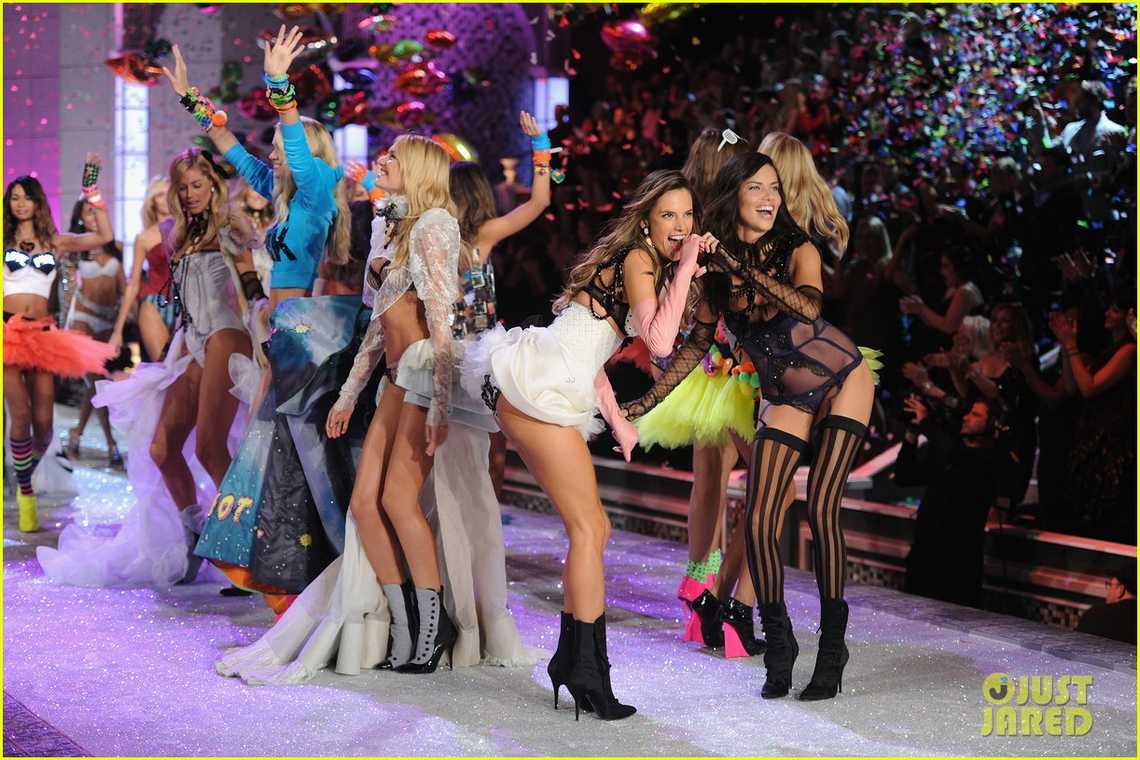
V. Innovating the Runway: The Design, Technology, and Artistry Behind the Victoria’s Secret Fashion Show
In this next captivating chapter of our journey through the world of the Victoria’s Secret Fashion Show, we focus our lens on the creative force that gave the show its visual splendor and theatrical magic: the design, technology, and artistry behind the scenes. This wasn’t merely a display of lingerie; it was a theatrical production, a visual feast, and a technological marvel. Let’s uncover the innovation, craftsmanship, and vision that turned the runway into a canvas of dreams.
- Themes and Inspirations: Each Victoria’s Secret Fashion Show was built around themes that guided the visual narrative. From “Romantic Journey” to “Sexy Pop Princesses,” these themes were the creative heartbeat of the show, inspiring every element from costumes to sets. The process of conceptualizing these themes required imagination, cultural sensitivity, and a flair for storytelling.
- Costume Design and Craftsmanship: Perhaps the most iconic elements of the Victoria’s Secret Fashion Show were the costumes. These were not mere garments but works of art, often handcrafted with meticulous attention to detail. Whether it was the ethereal Angel wings or the glimmering Fantasy Bra, the designs were a blend of fashion, sculpture, and engineering. Materials ranged from Swarovski crystals to exotic feathers, and designers often spent hundreds of hours on a single piece.
- Set Design and Staging: Transforming a runway into a world of fantasy required mastery in set design and staging. Each year, the show presented unique challenges, from recreating a Parisian landscape to building a Winter Wonderland. The sets were immersive, interactive, and often technologically advanced, creating a 360-degree experience for the audience.
- Technology and Innovation: The integration of technology was a key factor in elevating the show’s production value. From advanced lighting techniques to cutting-edge visual effects, technology infused the show with a sense of wonder and modernity. Live streaming, social media integration, and virtual reality experiences also played a role in connecting the show with a global audience.
- Makeup and Hair Artistry: The transformation of models into Angels required a team of skilled makeup artists and hairstylists. They were tasked with enhancing natural beauty while aligning with the show’s themes and aesthetics. Whether it was a sultry smokey eye or cascading waves of hair, the beauty aspect of the show was an art form in itself.
- Choreography and Direction: A seamless show required meticulous choreography and direction. Models were coached to walk with confidence, grace, and personality. Rehearsals were rigorous, ensuring that the interactions with musicians, transitions between segments, and overall flow were flawless.
- Collaboration and Teamwork: Perhaps the underlying force that made all this magic possible was collaboration. Designers, technicians, directors, artists, and models all worked in unison towards a shared vision. It was a melting pot of talents and disciplines, each contributing a unique flavor to the final masterpiece.
The Victoria’s Secret Fashion Show was not just a fashion event; it was a celebration of creativity, a testament to human ingenuity, and a showcase of artistic excellence. The runway was a stage where dreams were woven, where imagination took flight, and where the ordinary was transformed into the extraordinary.
In the end, the applause wasn’t just for the beautiful Angels or the stunning lingerie; it was for the unseen hands, the unsung heroes, and the unbridled creativity that brought the Victoria’s Secret Fashion Show to life. It was a ballet of brilliance, a dance of design, and a symphony of style that resonated far beyond the glitzy runway, echoing in the hearts and minds of those who witnessed this incredible spectacle of innovation and artistry. It was, in every sense, a fashion fantasy brought to life.
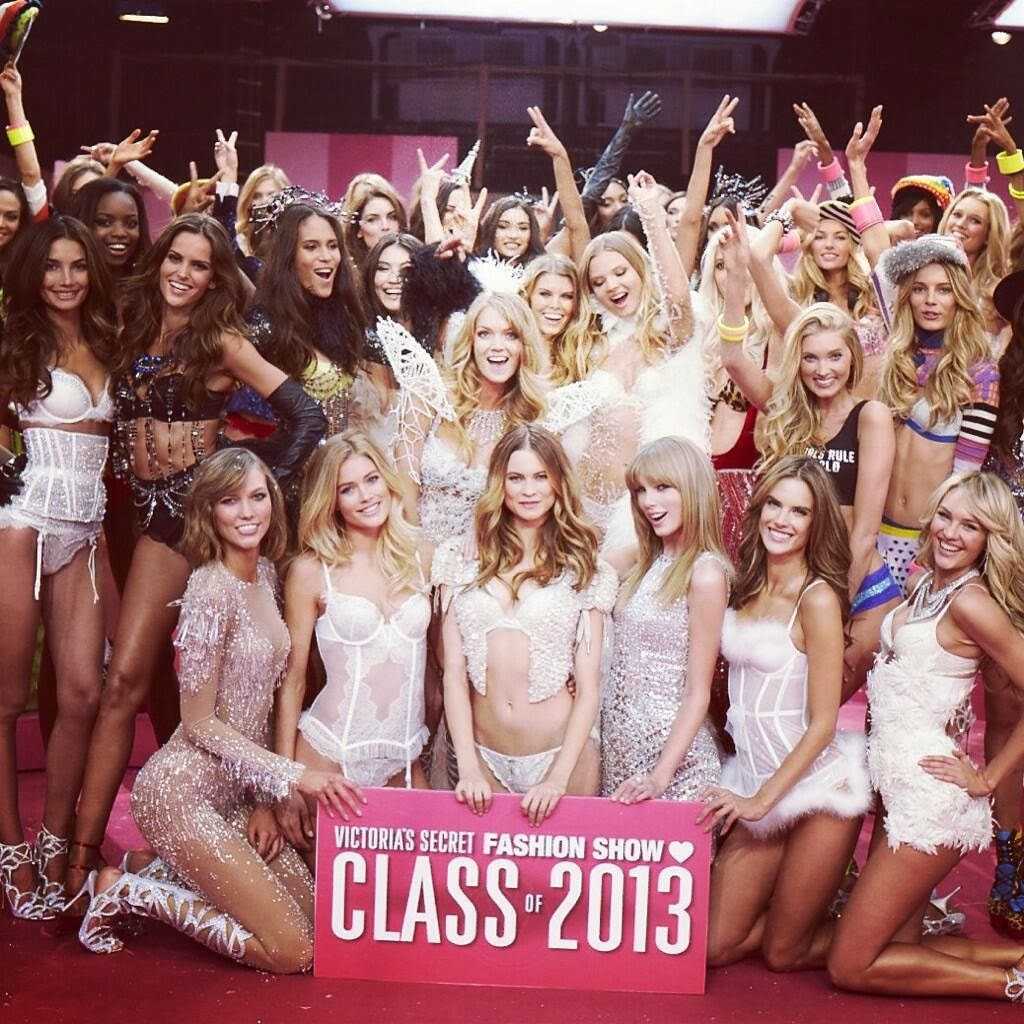
VI. More Than a Show: The Impact and Legacy of the Victoria’s Secret Fashion Show on Pop Culture and the Fashion Industry
As we continue to explore the multifaceted world of the Victoria’s Secret Fashion Show, it’s imperative to recognize its influence that extends beyond the glitz and glamour of the runway. It wasn’t just a fashion event; it was a cultural phenomenon that left an indelible mark on pop culture, the fashion industry, and society at large. In this section, we will dissect the impact and legacy of the show, analyzing its contributions, controversies, and the discussions it sparked.
- A Cultural Event: The Victoria’s Secret Fashion Show transcended the boundaries of a typical fashion show to become a widely anticipated cultural event. It drew millions of viewers from around the world, becoming a fixture in popular culture. Celebrities, musicians, and influencers were regular attendees, and the show became a topic of discussion in mainstream media.
- A Platform for Supermodels: As previously discussed, the show was a launchpad for some of the biggest names in modeling. It redefined the concept of a supermodel, creating a new category of celebrity models known as Angels. Their presence in the show often translated into global fame and lucrative opportunities.
- Innovations in Fashion Presentation: The integration of live music performances, theatrical staging, and multimedia elements set a new standard for fashion presentation. It combined entertainment and fashion in a unique way, influencing other fashion shows and events.
- Marketing and Branding Genius: The show was, at its core, a marketing vehicle for Victoria’s Secret. It helped the brand maintain its position as a leader in the lingerie industry and created a global buzz around its products. The show’s imagery, models, and themes became synonymous with the brand’s identity.
- Diversity and Representation: While the show made strides in ethnic diversity, it was often criticized for lack of size diversity and promoting unrealistic body standards. This dual aspect of inclusivity and exclusivity became a critical discussion point, reflecting broader societal conversations about beauty, body image, and representation.
- Social Media and Digital Engagement: The show’s embrace of social media and digital platforms was a pioneering move. From live tweets to backstage Instagram stories, the integration of social media created a sense of inclusivity and engagement with a broader audience.
- Controversies and Criticisms: The show was not without its share of controversies, ranging from cultural appropriation in costume design to comments made by executives about the inclusion of transgender models. These issues fueled debates and contributed to changing public perceptions of the show.
- An End of an Era and Future Directions: The cancellation of the show in 2019 signaled a shift in the fashion industry and consumer expectations. It reflected a changing landscape where inclusivity, authenticity, and social responsibility took center stage.
The Victoria’s Secret Fashion Show’s impact is multifaceted and complex. It was a mirror reflecting the desires, aspirations, and debates of its time. It was a celebration of beauty and creativity and, simultaneously, a subject of scrutiny and criticism.
In examining the legacy of the Victoria’s Secret Fashion Show, one must appreciate its innovations, recognize its influence, and critically analyze its shortcomings. It was a shimmering spectacle that dazzled the world but also left behind questions, conversations, and reflections that continue to resonate.
The final bow on the Victoria’s Secret runway was more than just the end of a show; it was the conclusion of a chapter in fashion history. It was a symbol of an era, a snapshot of a time, and a testament to the evolving dialogue between fashion, culture, and society. It was, in every sense, more than a show. It was a story, a statement, and a spectacle that will be remembered, dissected, and discussed for years to come.
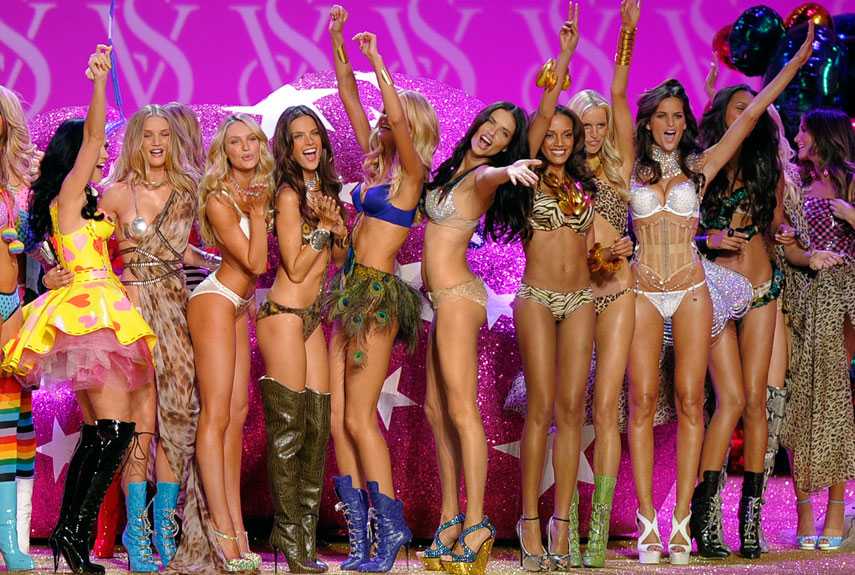
VII. Unveiling the Mystique: Behind-the-Scenes Insights and Unforgettable Moments of the Victoria’s Secret Fashion Show
The allure of the Victoria’s Secret Fashion Show extended far beyond the runway. What appeared to be a seamless, fantastical spectacle was the result of immense planning, precision, and a melange of human emotions and efforts. In this section, we will take you behind the curtain, unveiling the mystique and reliving unforgettable moments that defined this iconic show. It’s a journey into the heartbeat of the production, where dreams were sculpted, friendships were forged, and history was made.
- The Casting Process: Selecting the perfect Angels and models for the show was a meticulous process. The casting calls were famously intense, with models from around the world vying for a spot on the most coveted runway. From newcomers to seasoned professionals, the casting process was filled with anxiety, excitement, and the thrill of potential stardom.
- Preparation and Training: Once cast, models embarked on rigorous training regimens to prepare for the runway. This involved intense fitness routines, healthy eating, and long hours of practice. The preparation phase was not just physical; models often spoke about the mental and emotional journey leading up to the show.
- Rehearsals and Fittings: Behind the polished performances were countless hours of rehearsals and fittings. Every detail, from the way an Angel’s wing fluttered to the alignment of a jewel, was meticulously planned and practiced. The behind-the-scenes teamwork between designers, choreographers, and models was a fusion of artistry and discipline.
- Friendships and Bonds: The camaraderie among models, designers, and crew was a unique aspect of the Victoria’s Secret Fashion Show. Friendships were forged in the crucible of intense preparation, shared dreams, and collective creativity. Many models have expressed how the bonds they formed during the show lasted a lifetime.
- Iconic Runway Moments: Some moments captured on the runway have become emblematic of the show’s spirit. From Adriana Lima’s emotional farewell walk to Gisele Bündchen’s confident stride in the Fantasy Bra, these instances are etched in fashion history. The spontaneous interactions between models and musicians often created magic that was felt by everyone in the room.
- Behind-the-Scenes Glitches and Triumphs: Not every moment was smooth sailing. From wardrobe malfunctions to last-minute changes, the team had to navigate unforeseen challenges. However, the way they triumphed over these obstacles added to the lore of the show, reflecting professionalism and resilience.
- Celebrity Encounters and Surprises: The show was frequented by celebrities and fashion icons. Whether it was surprise appearances, unexpected performances, or star-studded after-parties, the show had its fair share of glamorous encounters and unforgettable surprises.
- The Enduring Legacy and Emotional Goodbyes: The final Victoria’s Secret Fashion Show in 2018 was an emotional moment for everyone involved. Tears, smiles, and a profound sense of accomplishment marked the end of an era. It was a poignant reminder of the human aspect of this grand spectacle, where dreams were lived, careers were launched, and legends were created.
Peeling back the layers of glitz and glamour, we find a world pulsating with passion, dedication, and creativity. The Victoria’s Secret Fashion Show was not just a visual spectacle; it was a human experience. It was a dance of dreams, a melody of emotions, and a canvas where art met ambition.
The behind-the-scenes insights provide a glimpse into the soul of the show, where real people with real dreams came together to create something extraordinary. It’s a reminder that behind every spotlight, every sparkle, and every stride on the runway, there is a story, a struggle, a triumph, and a memory.
Unveiling the mystique of the Victoria’s Secret Fashion Show is like opening a treasure trove of inspiration, aspiration, and human connection. It’s a celebration of what’s possible when creativity is unleashed, where collaboration thrives, and where the pursuit of excellence is a shared journey. It’s a testament to the magic that happens behind the curtains, where the ordinary becomes extraordinary, and where every stitch, step, and smile tells a story that transcends time. It’s the untold story of a show that captured hearts, ignited imaginations, and became a symbol of beauty, brilliance, and boldness.
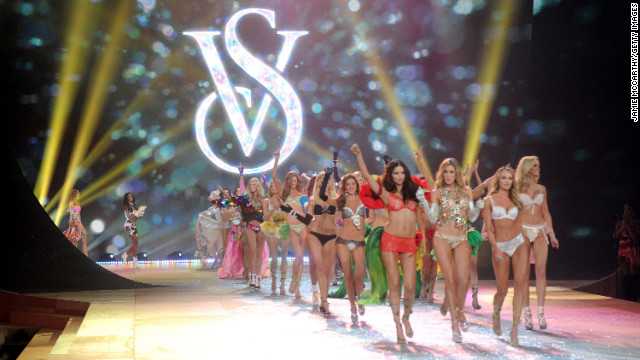
VIII. The Rise of Supermodels: Turning the Runway into Stardom
The Victoria’s Secret Fashion Show was more than just a display of lingerie and couture; it became a launchpad for supermodels, a platform where emerging talents turned into international sensations. The show’s role in cultivating and spotlighting supermodels is an essential facet of its history, reflecting its symbiotic relationship with the modeling world.
- The Birth of the “Angels”: Victoria’s Secret introduced the world to the concept of “Angels,” an elite group of models chosen to represent the brand. These models were not merely faces in a campaign; they were ambassadors, synonymous with the elegance, allure, and excitement of Victoria’s Secret. The Angel status became a coveted recognition, elevating models’ careers and bringing them global fame.
- A Star-Studded Runway: The Victoria’s Secret runway welcomed a dazzling array of models who would become some of the biggest names in the industry. Icons like Tyra Banks, Gisele Bündchen, Heidi Klum, Adriana Lima, and Alessandra Ambrosio became synonymous with the show. Their presence turned the runway into a glamorous stage where modeling transcended mere catwalks and became high-energy performances.
- Mentorship and Discovery: For many young and aspiring models, the Victoria’s Secret Fashion Show was a stepping stone, a chance to learn from seasoned professionals and be noticed by the world. The nurturing environment provided valuable mentorship opportunities, helping new faces blossom and find their unique place in the modeling landscape.
- Global Exposure: The Victoria’s Secret Fashion Show was broadcast to millions of viewers across the globe. For models, this meant unparalleled exposure, reaching markets and audiences that would have been otherwise challenging to access. The global reach propelled many models into international stardom, with lasting impacts on their careers.
- Diverse Representation (Challenges and Evolution): The show faced both praise and criticism regarding diversity and representation over the years. In its early days, the runway was often critiqued for lacking racial and body diversity. As societal norms and expectations evolved, so did the show’s casting decisions, slowly embracing a broader spectrum of beauty. The journey towards more inclusive representation reflects a complex dialogue between the fashion industry, social values, and consumer expectations.
- Impact on the Modeling Industry: The association with Victoria’s Secret became a prestigious mark in a model’s portfolio. It shaped recruitment strategies, contract negotiations, and branding opportunities within the modeling world. The show’s influence extended beyond the glitzy runway, affecting agencies, scouts, and the overall dynamics of the modeling profession.
- Personal Stories and Inspirations: Behind the glamour and spotlight were personal stories of determination, inspiration, and dreams coming true. Many models have openly shared how walking the Victoria’s Secret runway was a childhood dream or a turning point in their lives. These personal narratives humanize the spectacle, connecting the audience with the models on a deeper level.
- A Platform for Activism and Voice: Some models utilized the show’s platform to advocate for causes they believed in, from environmental awareness to social justice. Their visibility and influence turned the runway into a space for activism and expression, reflecting a broader trend where fashion and social conscience intertwine.
In retrospect, the Victoria’s Secret Fashion Show’s relationship with supermodels is multifaceted and profound. It’s a dance between fame and artistry, commerce and creativity, tradition and transformation. It’s a testament to how a runway can be more than a mere display of fashion; it can be a stage where dreams are realized, where beauty is celebrated in its many shades, and where the modeling profession is both honored and challenged. The show’s impact on the modeling world continues to resonate, leaving a legacy that transcends fabrics and feathers, reaching into the very heart of what it means to be a model in the contemporary fashion world.

IX. The Final Bow: Analyzing the Cancellation of the Victoria’s Secret Fashion Show and Its Implications for the Fashion World
The Victoria’s Secret Fashion Show was an institution, a glittering spectacle that dazzled audiences for over two decades. However, all great stories have an end, and in 2019, the curtains were drawn on this iconic show. The decision to cancel the show marked a significant moment in fashion history, opening a new chapter in the ongoing dialogue between fashion, society, and consumer behavior. In this section, we will explore the reasons behind the cancellation, the reactions it garnered, and its broader implications for the fashion world.
- A Changing Landscape: The Victoria’s Secret Fashion Show’s cancellation was a reflection of the evolving dynamics in the fashion industry and society at large. There was a growing shift towards inclusivity, authenticity, and a more holistic representation of beauty. The traditional model of the show was increasingly seen as out of sync with these modern sensibilities.
- Economic Factors: Ratings for the show had been in decline, and some argued that the production’s enormous costs were not yielding the same marketing benefits as in previous years. In an era where digital and social media platforms offer innovative ways to engage with audiences, the show’s economic viability came into question.
- Public Perception and Controversy: The show faced criticism for its lack of diversity in size and its portrayal of women. Controversial statements by executives and cultural appropriation allegations further fueled public scrutiny. These factors contributed to a change in perception, with some viewers and commentators seeing the show as out of step with the times.
- Reactions from the Fashion Community: The cancellation prompted mixed reactions from the fashion community. While some applauded the decision as a positive step towards modernizing the brand and the industry, others mourned the loss of a beloved tradition. Supermodels, designers, and fashion pundits weighed in, reflecting a diverse range of opinions.
- The End of an Iconic Branding Strategy: For years, the Victoria’s Secret Fashion Show was at the heart of the brand’s marketing strategy. Its cancellation symbolized a profound shift in branding and advertising tactics, highlighting the need for brands to adapt and align with changing consumer expectations and cultural norms.
- A Catalyst for Change: The decision to cancel the show could be seen as a catalyst for change in the fashion industry. It prompted introspection, debate, and a reevaluation of how fashion shows and events are conceptualized and executed. Other brands started to explore alternative formats, more inclusive casting, and socially responsible themes.
- Legacy and Future Directions: Despite its cancellation, the Victoria’s Secret Fashion Show leaves behind a rich legacy. Its influence on fashion presentation, marketing, and pop culture cannot be denied. The end of the show marked a turning point, not just for Victoria’s Secret but for the industry as a whole, opening new possibilities for innovation and evolution.
- Personal Reflections: The show’s cancellation was more than a business decision; it was an emotional moment for those who had been part of this incredible journey. From the models to the designers to the fans, it was an end of an era, filled with nostalgia, reflection, and anticipation for what the future holds.
The final bow of the Victoria’s Secret Fashion Show was a complex and multifaceted event. It was a symbol of change, a reflection of societal progress, and a sign of the dynamic nature of the fashion world. It marked the closing of one chapter and the beginning of another, where the lessons learned, the memories cherished, and the stories told continue to resonate and inspire.
In analyzing the cancellation, we gain insights into the pulse of contemporary fashion, where the interplay between aesthetics, economics, values, and emotions shapes the industry’s trajectory. It’s a reminder that fashion is not just about garments and glamour; it’s about culture, commerce, creativity, and connection. It’s about staying relevant, resonant, and responsive to the times we live in.
The Victoria’s Secret Fashion Show’s end is not a full stop; it’s a comma in the ongoing narrative of fashion. It’s a pause to reflect, to learn, and to reimagine. It’s a moment that encapsulates the beauty and complexity of fashion, where tradition meets transformation, and where the runway extends into the real world, touching lives, sparking conversations, and shaping the future.
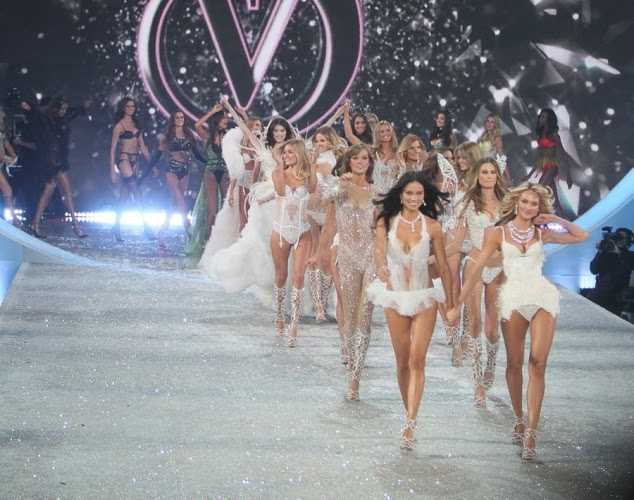
X. Conclusion: The Enduring Legacy of the Victoria’s Secret Fashion Show
The Victoria’s Secret Fashion Show was more than a runway event; it was a cultural phenomenon that left an indelible mark on the fashion world. From its inception to its grand finale, the show became synonymous with glamour, creativity, and innovation.
Throughout its journey, the show reflected societal trends, pushed artistic boundaries, and celebrated the beauty and complexity of the human experience. It provided a platform for artists, designers, and models, influencing fashion’s global landscape and inspiring generations of fashion enthusiasts.
The decision to end the show signaled a turning point in the fashion industry, one that highlights the need for adaptability, inclusivity, and responsiveness to cultural dynamics. It’s a poignant reminder of the transient nature of trends and the timeless essence of creativity and connection.
As we bid farewell to this iconic show, we are left with a rich tapestry of memories, lessons, and legacies that continue to resonate and inspire. The Victoria’s Secret Fashion Show is not just a memory; it’s a milestone, a muse, and a mirror reflecting the ever-evolving story of fashion.
Related Posts
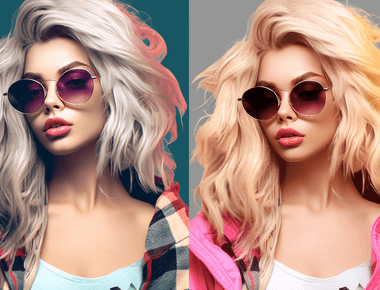
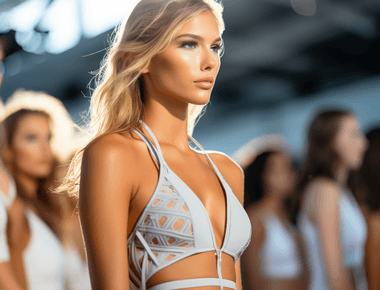
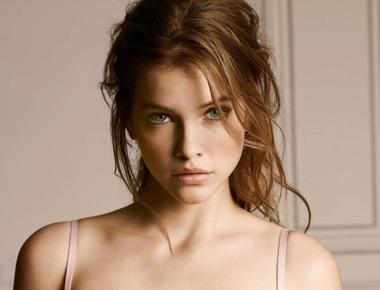
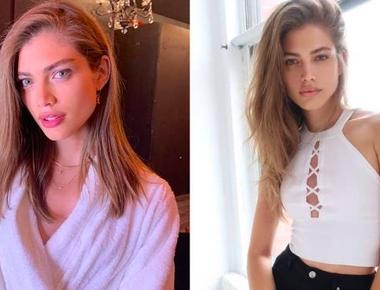
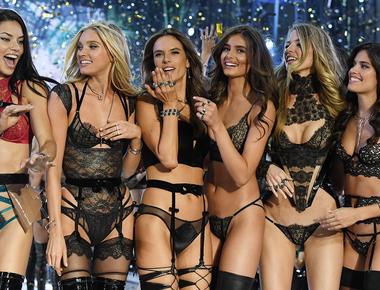
Quick Links
Legal Stuff


